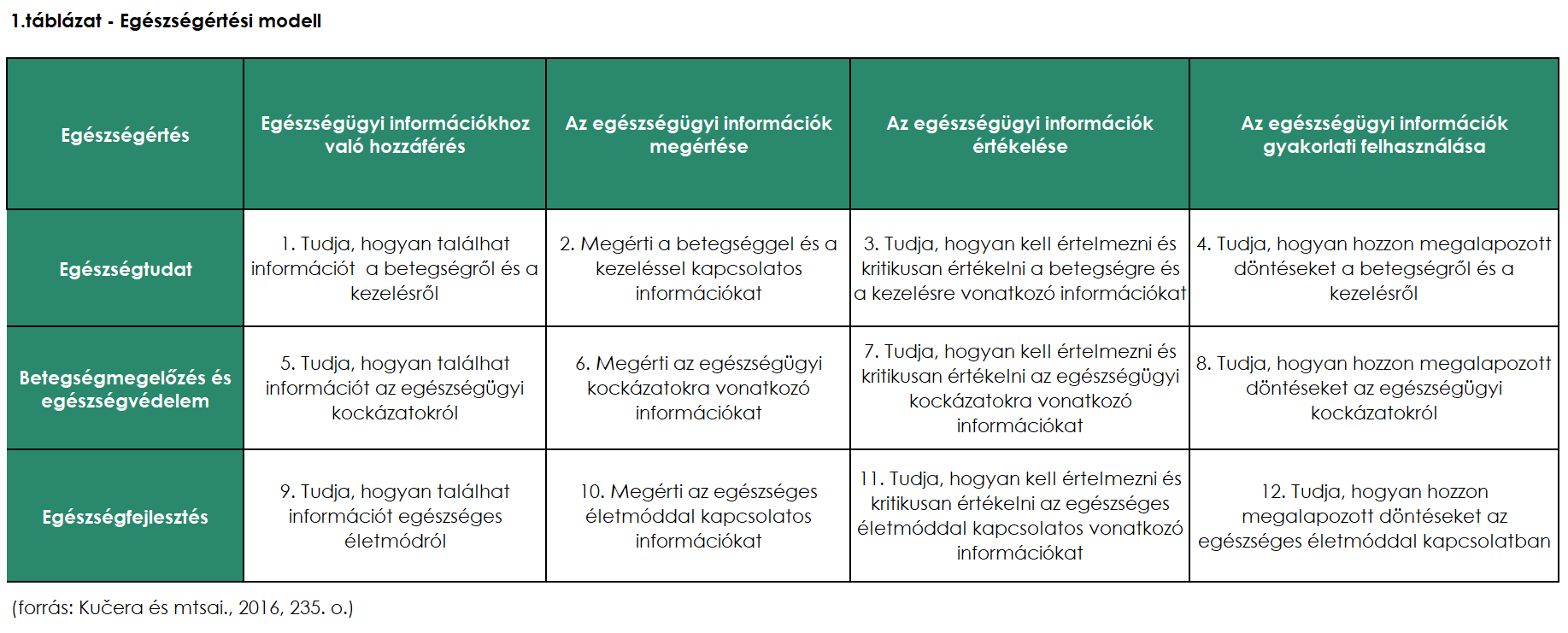

The phenomenon of health literacy is not entirely easy to grasp and turns out to be heterogeneous, leading therefore to a multitude and increase of definitions and concepts. Anyhow, health literacy is a term that can be described and measured.
Health Literacy is notably defined by the World Health Organization as a set of cognitive and social skills that determines the motivation and ability of individuals to access, understand and use information in a way that promotes and maintains good health.
To measure and estimate levels of health literacy among the population, surveys have adopted several models throughout the years.
In 2014, the first systematic study of health literacy in selected European countries (HLS-EU) was performed and published. It was prepared based on the model below reported in “WHO Health Literacy: The Solid Facts”, published in 2013. A set of 47 questions was created from the mentioned model, which was part of the standardized questionnaire (HLSQ-EU).
Table 1. Health literacy model

Accordingly, a health-literate person is an individual who has the knowledge, skills, and confidence to manage their health daily. This includes the ability to know when to start using the health system and how to navigate it so that its services are used to the fullest. Alternatively stated, personal health literacy is the degree to which individuals can find, understand, and use information and services to inform health-related decisions and actions for themselves and others.
Along with personal health, literacy stands for organizational health literacy, which displays the degree to which organizations equitably enable individuals to find, understand, and use information and services to inform health-related decisions and actions for themselves and others. It is closely related to three elements:
-the health system
-the field of culture and society,
-the sphere of education.
A society with a high level of health literacy and the skills associated with it enjoys better health, a higher standard of living, and well-being in general. In contrast, countries where health literacy is problematic, face poorer health in general. This is often associated with risky behavior.
Health literacy is important because if individuals cannot find, understand, and use health-related information and services, making well-informed health-related decisions and acting on those decisions is proving to be difficult. This affects their overall health and care. People with low health literacy are more likely to be hospitalized, need to go to an emergency department, and have poorer health outcomes. Ultimately, low health literacy affects the safety and quality of health care.
According to the aforementioned comparative survey conducted in 2014 in eight EU member states, almost every second respondent (47%) in the sample had inadequate or problematic health literacy, with its levels scoring even lower among people over 66 years old, one of the groups defined as ‘vulnerable’.
The results showed that the level of health literacy in the V4 countries is alarming and significantly low, as follows: Czech Republic - 13.3% inadequate and 29.2% problematic; Slovakia - 23% inadequate and 36% problematic; Hungary - 20% inadequate and 32% problematic; Poland - 10.2% inadequate and 34.4% problematic.
Regular health literacy monitoring is important for effective health policy planning, health promotion, and disease prevention on national and European scales. Only based on empirical data is it possible to work effectively with the phenomenon of the level of health literacy of the population.
In all countries of the Visegrad Group, demographic changes related to the aging of societies are increasingly visible and felt in the social sphere. These changes are also accompanied by the phenomenon of longevity, i.e., extending the predictable life expectancy in relation to the average life expectancy in earlier years and decades. This phenomenon manifests itself in the form of a growing number of the elderly, including people in their nineties or hundred years, whose presence in societies was almost marginal a few decades ago.
Due to biological changes in the body and the resulting psychological changes, the elderly is associated with multiple forms of medical diseases. Therefore, it should be emphasized how important the actions concerning the awareness and health skills of citizens are.